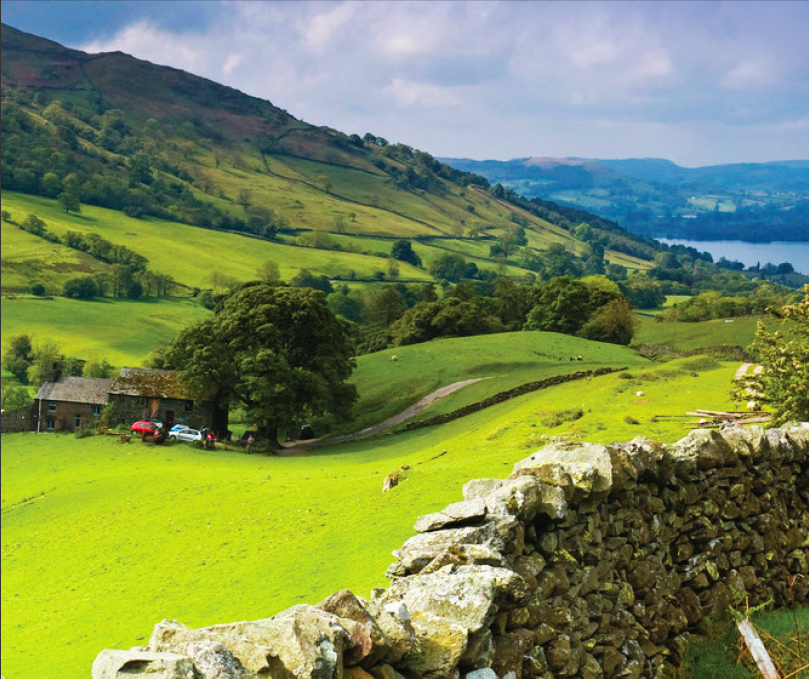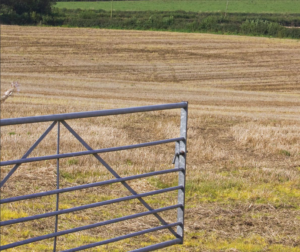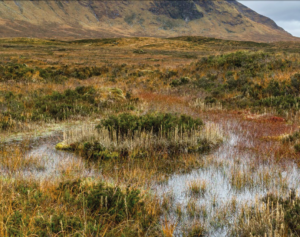As part of its efforts to address climate change, the UK has committed to a Net Zero economy by 2050. The UK Committee on Climate Change (UK CCC) provides a map of land use policies that will be necessary for reaching that commitment. Land use is often the poor foster child of climate change mitigation efforts, overshadowed by efforts to address greenhouse gas (GHG) emissions from energy, transportation, industry, and buildings. Yet land use accounts for about 12% of total UK GHG emissions. In Ireland, agriculture alone accounts for about one-third of total GHG emissions.

The UK CCC report covers agriculture, forestry and peatlands in England, Scotland, Wales and Northern Ireland. The report notes that it includes the first in-depth recommendations on agricultural policies, a much needed missing piece of plans for climate action. In light of the transformations that will occur because of the UK leaving the European Union, especially the loss of the EU Common Agriculture Policy, and its funding, these recommendations are particularly timely.
The Report
The overriding framework is to use land in ways that reduce GHG emissions and increase carbon sequestration. For land use, the report offers objectives in five areas.
Agriculture
The key component of the land policies is for promoting low-carbon farming practices, in conjunction with a reduction in consumption of carbon-intensive food (e.g., beef, lamb and dairy). With such a combination, about one-fifth of agricultural land would be released by 2050 for actions that reduce emissions and sequester carbon. That’s a significant change in the farming sector, and a major change in consumer behavior.

The low carbon farm practices include controlled release fertilisers, improved livestock health, and slurry acidification. Such practices would include developing, and implementing, feed additives that reduce enteric emissions by inhibiting the production of methane in the rumen. New regulations to control enteric fermentation from livestock could be implemented under the Clean Air Act (to reduce methane emissions). Unfortunately, this practice has been discussed more than developed.
These practices, as well as savings in energy for farming, can reduce greenhouse gas (GHG) emissions from soils, livestock and manure management by 10 MtCO2e by 2050. However, it must be noted that the report’s focus is on “encouraging” rather than “requiring” low-carbon farming practices.
Other measures under consideration are the extension of existing regulations to reduce farm emissions, e.g., for nitrogen.
For these new or expanded existing regulatory regimes, and to ease the transition for farmers, the report recommends support from public financing, at least for a limited period of time.
A critical recommendation of the UK CCC is for a strong enforcement regime to ensure compliance with implementation of these polices. The report notes that the relevant environmental agencies throughout the UK are responsible for enforcing many of the regulations supporting these polices yet they lack the resources to do so. As the report urges, “These bodies need to be fully resourced to ensure effective enforcement of existing and future regulations.” At 87. Of course, to the extent that any policies are voluntary and not required, enforcement is toothless.
Forestry
The report recommends a significant increase in tree planting. There are clear arguments, and science for supporting such an effort, but we need to recognize that it is a classic instance of picking the low-hanging fruit of mitigation. Even Trump supports planting trees. Nevertheless, the more trees the better, assuming the right trees are planted in the right places.
UK forests cover about 13% of the land and the goal is to increase coverage to 17% by 2050 by planting 30,000 hectares (about 75,000 acres) with 90-120 million trees each year.

The report supports agro-forestry on 10% of agricultural land and a 40% increase in hedge length by 2050, and an increase in the management of existing broadleaf woodlands from 20% currently to 80% by 2030. The report suggests that hedgerow creation is not cost-effective from a carbon perspective alone, but hedgerows provide a large range of other environmental benefits that justify public funding. These other benefits include reducing the effects of soil erosion from wind, shelter for livestock, biodiversity, and water quality, if planted by water courses.
The value of trees is as storage for carbon, use in construction and in the energy sector, when combined with carbon capture and storage. To underpin an income stream and long-term certainty for afforestation and agro-forestry, the UK CCC argues for a trading scheme or Feed-in-Tariff similar to the Contracts for Difference used in the renewable energy sector.
The report estimates that improved woodland management would deliver annual emissions sequestration by 2050 of 14 MtCO2e, with an additional 14 MtCO2e from harvested materials and 6 MtCO2e from agro-forestry (planting trees on agricultural land while maintaining the primary use of the land.
Restore Peatlands
The UK CCC recommends restoring 50% of upland peat and 25% of lowland peat. These actions would reduce peatland emissions by 5 MtCO2e by 2050.
A number of actions to protect the peatlands are recommended. Since a major stress on peatland is from extensive livestock grazing, the stocking rate needs to be lowered. And the report supports a ban on rotational burning of peat soils (sometimes to promote grouse shooting), since voluntary action has failed.

Water companies are large land owners, including a lot of upland peat in the north and north-west of England, and smaller areas in the south-west. Further restoration of their peatlands to improve water quality is called for, and the companies already have approval from the water regulator to recover the costs of restoration through customer bills so that the costs of treating water downstream of the catchment can be captured.
Lowland peat represents high-grade agricultural crop land so it is more expensive to restore. `As a result, the UK CCC recommends both full restoration and sustainable management practices for lowland peat that would allow for agricultural production to continue. Example of carbon-saving management practices are seasonal rewetting of peatland in winter, water table management, cover crops, and wetland farming.
The report also identifies several immediate policy instruments to protect lowland peatland, including banning extraction of peat, and the ban on sales of peat for horticultural use (two-thirds are imported, mainly from Ireland). Since 2012 no new licenses for extraction have been granted but some licenses do not expire until 2040, and the report calls for early termination of these licensees, with possible payment of compensation if appropriate.
Bioenergy crops
Expanding UK bioenergy crops to around 23,000 hectares (about 56,834 acres) each year would deliver 2 MtCO2e emissions savings in the land sector and 11 MtCO2e from the harvested biomass by 2050, when used with carbon capture and storage.
The report provides for planting of miscanthus, short-rotation coppice and short-rotation forestry. The goal of 23,000 hectares each year would double current plantings of these crops.
While bioenergy crops are faster growing than new woodlands, the report advises that biomass resources need to be used for long-term best use. In the long term, biomass crops should be used for construction and carbon capture and storage with biomass combustion (BECCS), and less so for heating and generating power without carbon capture and storage (CCS).
The costs of establishing energy crops are relatively high due to the costs of propagating the planting material. For example, establishment costs for miscanthus average £2,300/hectare due to the cost of the rhizome. As a result, some public financing may be required to establish the biomass supply.
Reduce food waste and consumption of the most carbon-intensive foods
While climate actions for agriculture remain hard to implement, developing behavior change among consumers is equally stubborn. And the UK CC is ambitious in calling for a reduction in food waste by 20% and reduction in the consumption of beef, lamb and dairy by at least 20% per person. Such reductions would save 7 MtCO2e of on-farm emissions by 2050. In addition, the reductions wouid provide more land for tree planting and bioenergy crops.
While the reduction in carbon-intensive foods sounds significant, in fact the recommended levels of consumption are well within current healthy eating guidelines. So eating less beef, lamb, and dairy is more than justified by health needs, and the savings in GHGs is a bonus for the individuals and the earth.
These actions would also result in a 10% reduction in cattle and sheep numbers by 2050, compared with 2017 levels. In contrast, there already has been a 20% reduction over the past two decades.
Conclusion
The UK CCC report also provides ways to strengthen the regulatory baseline, generate new funding and revenue raising actions, and develop means of enabling rapid change in these five areas.
The Committee estimates that these measures carry a total cost of around £1.4 billion per year, generating wider benefits of £4bn per year. Much of this funding can be provided privately, but the total cost should be met through a combination of public and private funding.
Not unexpectedly, the climate change actions for farming are less concrete and less extensive than those we are familiar with for other GHG emission sources, as in energy or transport. The goal of fundamentally changing farming practices remains elusive.
Sources
UK Committee on Climate Change, Land use: Policies for a Net Zero UK (January 2020). bit.ly/2PfOrVR


No comments yet, add your own below